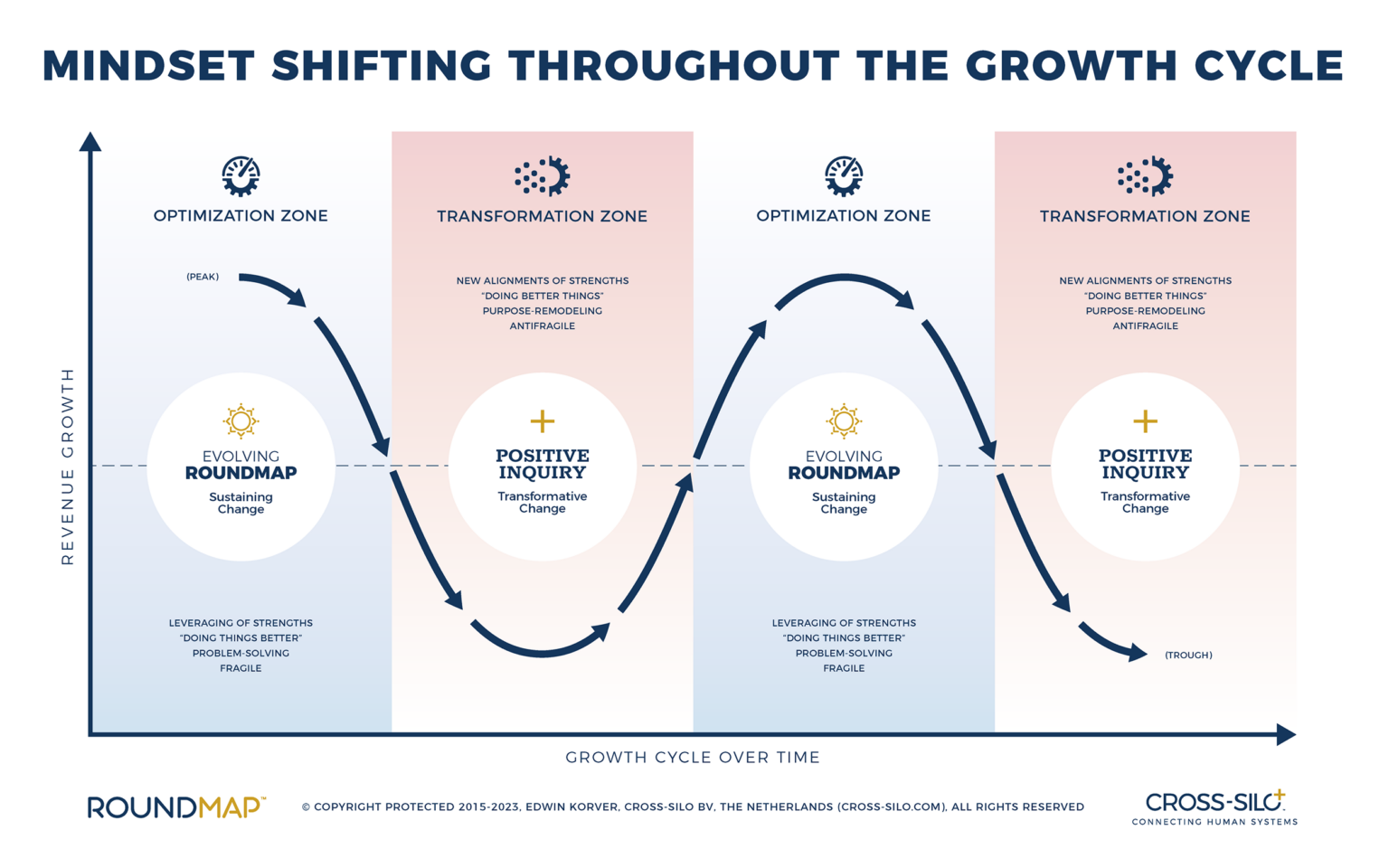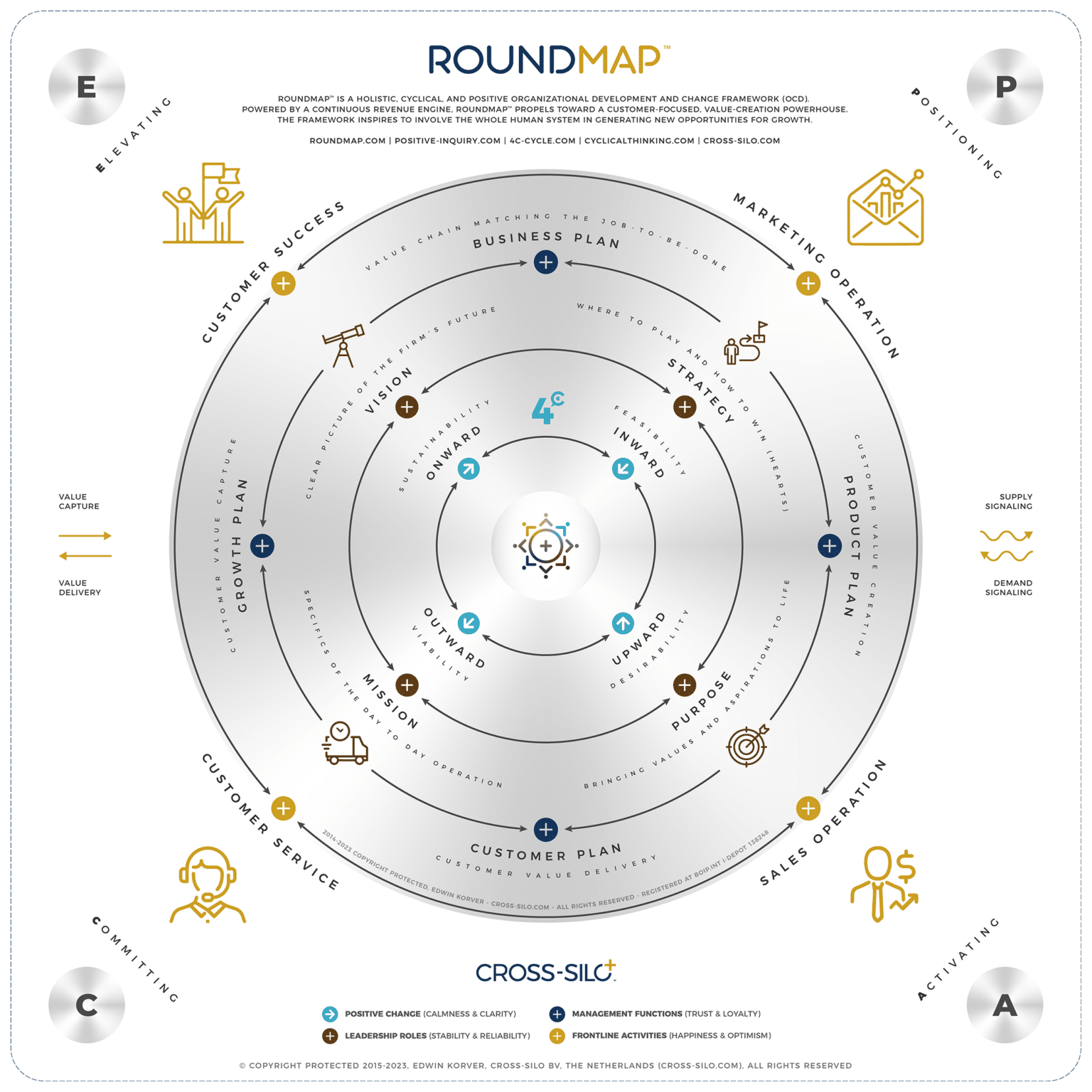Given the dynamics of cyclical management, we’ve created an image to explain when to use what part of the Roundmap™ framework. While cycles typically have 4 or more separate stages, we keep things simple by grouping stages into the Optimization Zone (Bull) and the Transformation Zone (Bear).
The wave-shaped line represents the Growth cycle. It transitions through the Optimization Zone and the Transformation Zone. During the Optimization Zone, the focus is on incremental improvements – we refer to this as incremental or sustaining change. When growth declines and attempts to extend the lifecycle have been exhausted, the focus must shift to finding better ways to grow. This is referred to as transformative change or simply transformation.
However, when growth declines, most executives resort to cost restructuring, believing they can and should turn the trend. By doing so, they risk delaying the transformation beyond a point of recovery, often resulting in massive layoffs. While some loss of jobs may be unavoidable during downturns, an unplanned loss of knowledge and experience can have a long-lasting negative effect on the organization’s future performance. When to shift zones depends on the conditions (internal and external forces) and the speed of change.
As you may have noticed, the fourth stage in Roundmap relates to the Growth Plan. A decision to optimize or abandon existing revenue streams typically emerges from this stage. While working for Fortune 500 companies, we found that Positive Inquiry is the ideal approach to turning a downturn around.


